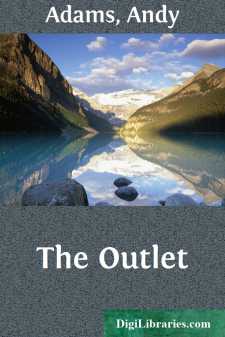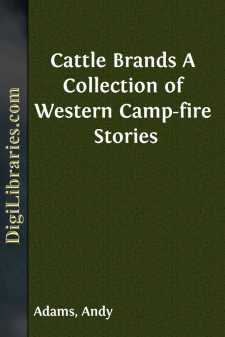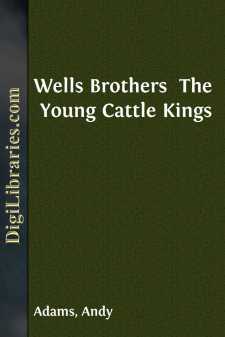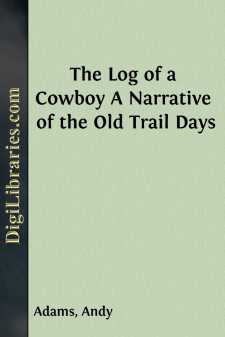Categories
- Antiques & Collectibles 13
- Architecture 36
- Art 48
- Bibles 22
- Biography & Autobiography 813
- Body, Mind & Spirit 142
- Business & Economics 28
- Children's Books 15
- Children's Fiction 12
- Computers 4
- Cooking 94
- Crafts & Hobbies 4
- Drama 346
- Education 46
- Family & Relationships 57
- Fiction 11829
- Games 19
- Gardening 17
- Health & Fitness 34
- History 1377
- House & Home 1
- Humor 147
- Juvenile Fiction 1873
- Juvenile Nonfiction 202
- Language Arts & Disciplines 88
- Law 16
- Literary Collections 686
- Literary Criticism 179
- Mathematics 13
- Medical 41
- Music 40
- Nature 179
- Non-Classifiable 1768
- Performing Arts 7
- Periodicals 1453
- Philosophy 64
- Photography 2
- Poetry 896
- Political Science 203
- Psychology 42
- Reference 154
- Religion 513
- Science 126
- Self-Help 84
- Social Science 81
- Sports & Recreation 34
- Study Aids 3
- Technology & Engineering 59
- Transportation 23
- Travel 463
- True Crime 29
The Outlet
by: Andy Adams
Description:
Excerpt
PREFACE
At the close of the civil war the need for a market for the surplus cattle of Texas was as urgent as it was general. There had been numerous experiments in seeking an outlet, and there is authority for the statement that in 1857 Texas cattle were driven to Illinois. Eleven years later forty thousand head were sent to the mouth of Red River in Louisiana, shipped by boat to Cairo, Illinois, and thence inland by rail. Fever resulted, and the experiment was never repeated. To the west of Texas stretched a forbidding desert, while on the other hand, nearly every drive to Louisiana resulted in financial disaster to the drover. The republic of Mexico, on the south, afforded no relief, as it was likewise overrun with a surplus of its own breeding. Immediately before and just after the war, a slight trade had sprung up in cattle between eastern points on Red River and Baxter Springs, in the southeast corner of Kansas. The route was perfectly feasible, being short and entirely within the reservations of the Choctaws and Cherokees, civilized Indians. This was the only route to the north; for farther to the westward was the home of the buffalo and the unconquered, nomadic tribes. A writer on that day, Mr. Emerson Hough, an acceptable authority, says: "The civil war stopped almost all plans to market the range cattle, and the close of that war found the vast grazing lands of Texas fairly covered with millions of cattle which had no actual or determinate value. They were sorted and branded and herded after a fashion, but neither they nor their increase could be converted into anything but more cattle. The demand for a market became imperative."
This was the situation at the close of the '50's and meanwhile there had been no cessation in trying to find an outlet for the constantly increasing herds. Civilization was sweeping westward by leaps and bounds, and during the latter part of the '60's and early '70's, a market for a very small percentage of the surplus was established at Abilene, Ellsworth, and Wichita, being confined almost exclusively to the state of Kansas. But this outlet, slight as it was, developed the fact that the transplanted Texas steer, after a winter in the north, took on flesh like a native, and by being double-wintered became a marketable beef. It should be understood in this connection that Texas, owing to climatic conditions, did not mature an animal into marketable form, ready for the butcher's block. Yet it was an exceptional country for breeding, the percentage of increase in good years reaching the phenomenal figures of ninety-five calves to the hundred cows. At this time all eyes were turned to the new Northwest, which was then looked upon as the country that would at last afford the proper market. Railroads were pushing into the domain of the buffalo and Indian; the rush of emigration was westward, and the Texan was clamoring for an outlet for his cattle. It was written in the stars that the Indian and buffalo would have to stand aside....






